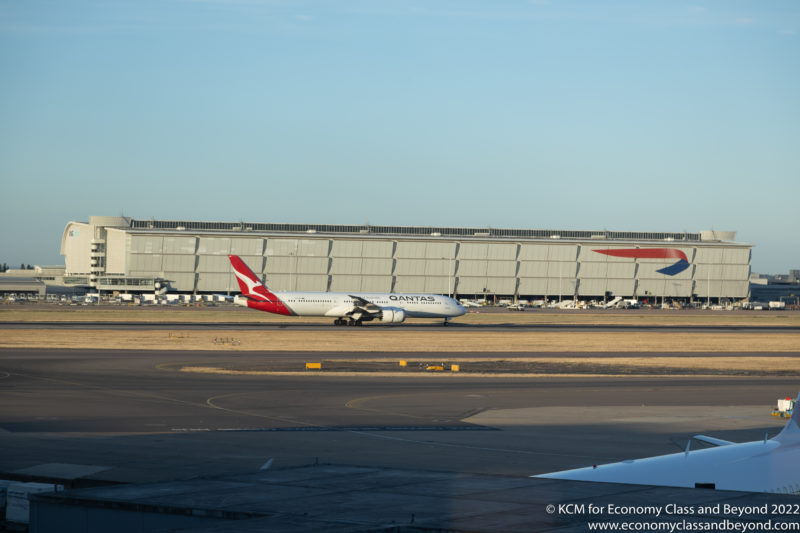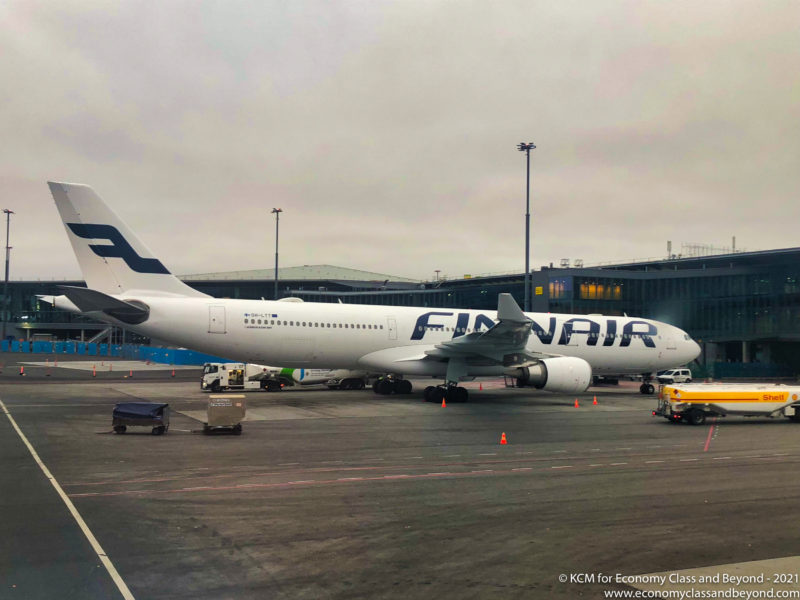It seems Qantas is gearing up for a busy season, with the airline deploying more capacity, adding routes and leasing aircraft… from Finnair.

From late October 2023*, the carrier will add around one million seats to its international network over 12 months compared to its current schedule, to destinations across Asia, the United States and the Pacific.
Fleet Expansion… as well as Finnair
The additional capacity will be made possible through a combination of more Qantas aircraft returning to service, new aircraft joining the fleet and an arrangement with Finnair to operate two Airbus A330 aircraft on two Qantas routes.
Over the past six months, Qantas has brought five international aircraft back into its fleet. A new Boeing 787 Dreamliner arrived in May and another two will be delivered next month.

The latest Qantas A380 stored in the desert was reactivated in January and an additional A380 will return to service at the end of the year following maintenance and modifications to the cabin.
The Finnair A330 aircraft will operate selected Qantas flights between Sydney and Singapore from late October and all flights between Sydney and Bangkok from late March 2024, releasing Qantas aircraft and crew to boost flying elsewhere.

For the first two-and-a-half years of this agreement, flights will be operated by Finnair pilots and cabin crew, with customers continuing to receive Qantas’ inflight food and beverage service, amenities, inflight entertainment and baggage allowance.
From late 2025, two Finnair A330s will be dry leased, operating for up to three years with Qantas pilots and cabin crew, creating new jobs and further promotional opportunities within Qantas.
Network
For those who are looking to travel with Qantas, the airline is planning the following network increases from 29 October 2023:
United States
- Melbourne – Los Angeles – Flights to increase from daily to nine per week, increasing capacity by around 60 per cent with more A380s flying.
- Sydney – New York via Auckland – Flights to increase from three to four per week.
Asia
Flights to double, increasing from 14 to 28 per week, offering the choice of four daily flights to Japan from 26 November.
- Sydney –Tokyo to increase from daily to double daily.
- Melbourne – Tokyo Narita to increase from four per week to daily.
- Brisbane – Tokyo Narita to increase from three per week to daily.
- Sydney – Shanghai – Flights to commence for the first time in more than three years with daily A330 flights
- Sydney – Hong Kong – Capacity boosted by more than 50 per cent over the peak Australian summer season, with daily flights to be operated by a mix of A380 and A330 aircraft.
- Melbourne – Hong Kong – Flights to increase from four per week to daily
- Melbourne – Singapore – Flights to increase from 10 to 14 per week from 31 March 2024.
- Sydney – Singapore – Flights to increase from 14 to 15 per week from 31 March 2024.
- Melbourne – Delhi – Flights to increase from three to six per week over the peak Australian summer season.
Pacific and Tasman
- Brisbane – Wellington – New route to operate daily with E190 aircraft.
- Brisbane – Honiara, Solomon Islands – New route to operate three days per week with E190 aircraft.
- Sydney – Christchurch – Flights to increase from 11 to 14 per week.
- Sydney – Queenstown – Flights to increase by up to one per week, with up to 14 flights over the peak Australian summer season.
Ticking on these routes will open up slowly via Qantas and its sales distribution channels. If you’re affected by flight changes, Qantas will be in contact in due course to rebook as needed.
In Quotes
Qantas CEO Alan Joyce.
“The rebound in demand for international travel since borders reopened has been incredibly strong and this boost to our network will add hundreds of thousands of seats in time for the busy Australian summer holiday period,”
“Qantas has been the most on-time major domestic airline for the past eight months in a row and that improved performance means we can release some of the aircraft we’ve had in reserve. That reflects more parts of the aviation supply chain returning to normal and it’s a huge credit to the hard work of our people across the Group.
“While airlines globally are working to restore capacity to meet demand, there is still a mismatch between supply and demand for international flying. But with more of our aircraft back in the air, new 787s joining our fleet and our contract with Finnair, we’ve got more seats for our customers and more opportunity for Qantas crew as we increase our own flying.
“We know our customers are looking for great value and this additional capacity will also put downward pressure on fares.”
An interesting place to get capacity
It seems that Finnair has extra capacity still as it continues to suffer from the fallout from not being able to access Russian Airspace- and has the aircraft capacity to spare (something it has been doing with British Airways, with BA leasing Finnair capacity).
With a five-year lease on the cards and a similar type to what Qantas operate, the A330-300s should slip into the fleet reasonably well.
It’s also a revenue lifeline for the airline – which it seems to be needed after the recent round of “enhancements“.
For Qantas, it seems that growth is on their agenda – and they’re growing fast after a stunted few years, with their long-haul network growing out to provide extra capacity for the Australian summer.
The trick for the airline will be sustaining that growth beyond then.
Welcome to Economy Class and Beyond. Your no-nonsense guide to network news, honest reviews, in-depth coverage, unique research, as well as the humour and madness I only know how to deliver.
Follow me on Twitter at @EconomyBeyond for the latest updates, as well as Mastodon too! You can follow me on Instagram too!
Also, remember that we are part of the BoardingArea community, bringing you the latest frequent flyer news from around the world.